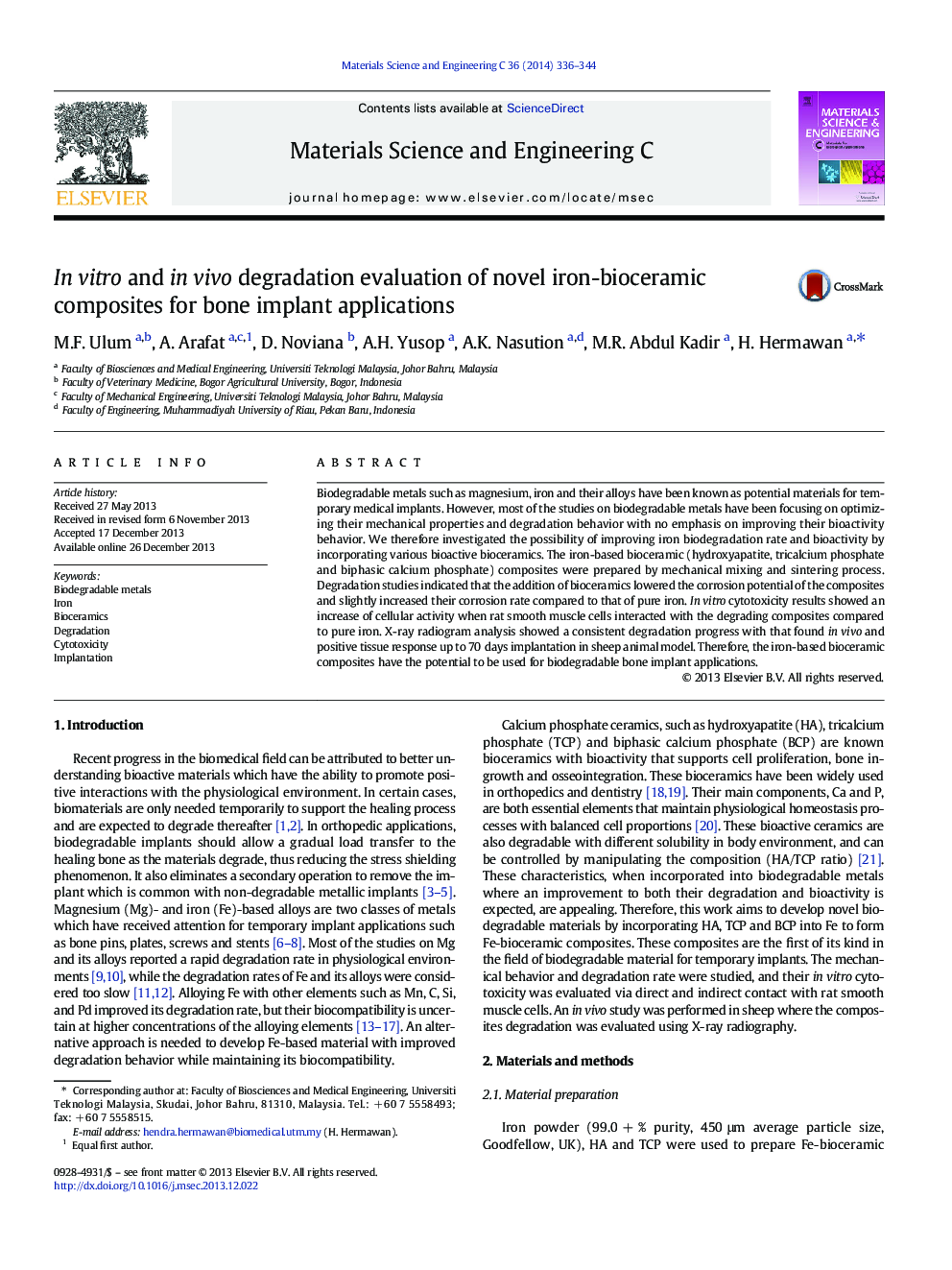| Article ID | Journal | Published Year | Pages | File Type |
|---|---|---|---|---|
| 1429254 | Materials Science and Engineering: C | 2014 | 9 Pages |
•Iron-bioceramics composites have been proposed to improve degradation and bioactivity of iron-based biodegradable metals.•The composites had lower corrosion potential but higher degradation rate than pure iron.•The composites did not show improvement on mechanical property compared to pure iron.•Addition of 5 wt% Ca/P based ceramics to iron improved both in vitro and in vivo bioactivity of the composites.
Biodegradable metals such as magnesium, iron and their alloys have been known as potential materials for temporary medical implants. However, most of the studies on biodegradable metals have been focusing on optimizing their mechanical properties and degradation behavior with no emphasis on improving their bioactivity behavior. We therefore investigated the possibility of improving iron biodegradation rate and bioactivity by incorporating various bioactive bioceramics. The iron-based bioceramic (hydroxyapatite, tricalcium phosphate and biphasic calcium phosphate) composites were prepared by mechanical mixing and sintering process. Degradation studies indicated that the addition of bioceramics lowered the corrosion potential of the composites and slightly increased their corrosion rate compared to that of pure iron. In vitro cytotoxicity results showed an increase of cellular activity when rat smooth muscle cells interacted with the degrading composites compared to pure iron. X-ray radiogram analysis showed a consistent degradation progress with that found in vivo and positive tissue response up to 70 days implantation in sheep animal model. Therefore, the iron-based bioceramic composites have the potential to be used for biodegradable bone implant applications.
